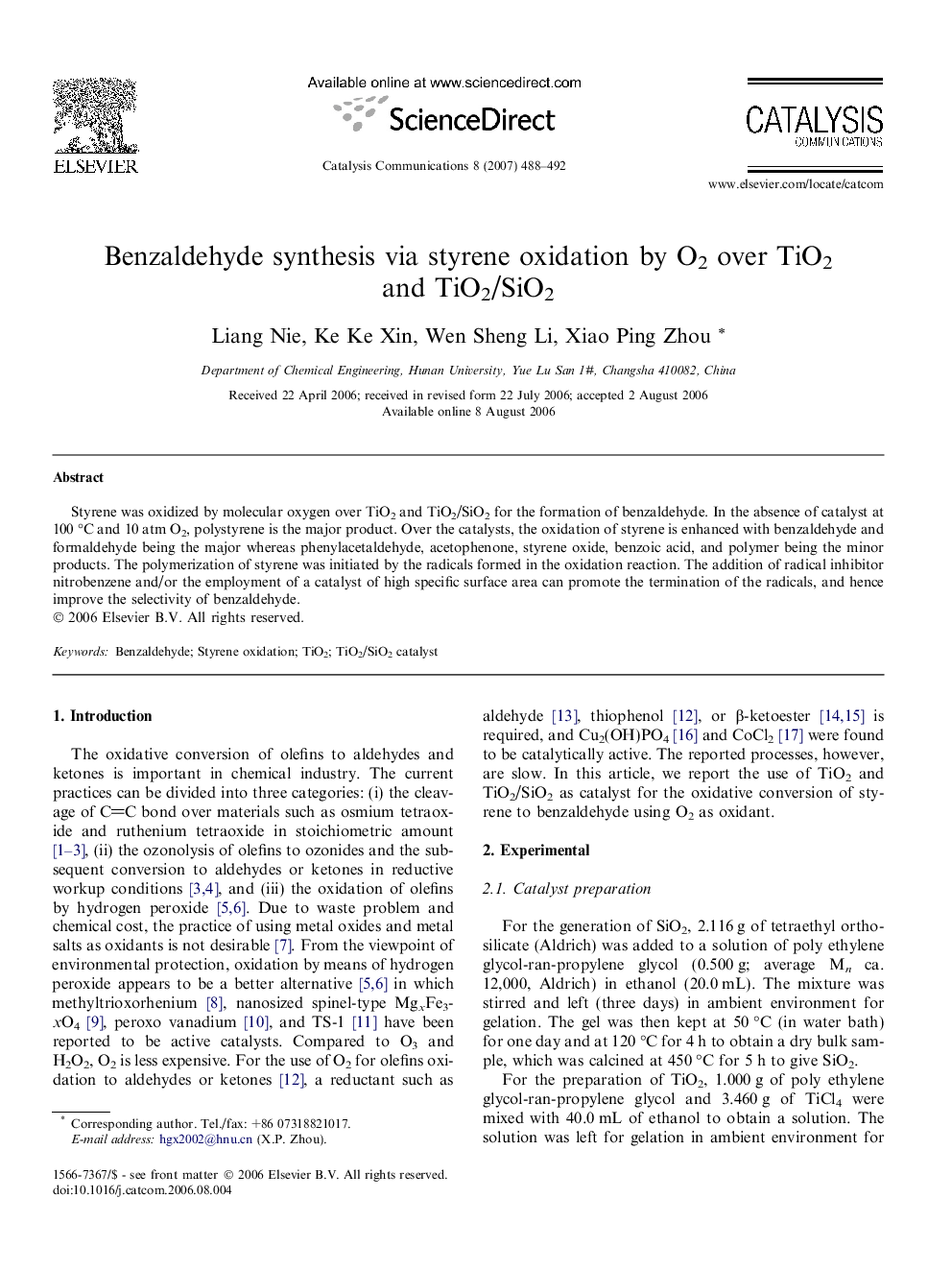| Article ID | Journal | Published Year | Pages | File Type |
|---|---|---|---|---|
| 52872 | Catalysis Communications | 2007 | 5 Pages |
Abstract
Styrene was oxidized by molecular oxygen over TiO2 and TiO2/SiO2 for the formation of benzaldehyde. In the absence of catalyst at 100 °C and 10 atm O2, polystyrene is the major product. Over the catalysts, the oxidation of styrene is enhanced with benzaldehyde and formaldehyde being the major whereas phenylacetaldehyde, acetophenone, styrene oxide, benzoic acid, and polymer being the minor products. The polymerization of styrene was initiated by the radicals formed in the oxidation reaction. The addition of radical inhibitor nitrobenzene and/or the employment of a catalyst of high specific surface area can promote the termination of the radicals, and hence improve the selectivity of benzaldehyde.
Keywords
Related Topics
Physical Sciences and Engineering
Chemical Engineering
Catalysis
Authors
Liang Nie, Ke Ke Xin, Wen Sheng Li, Xiao Ping Zhou,
